Sixty-one years after releasing their first single, ‘Love Me Do’, The Beatles have released their last, ‘Now and Then’, to critical and emotional acclaim.
It’s been 45 years in the making – with the first bars written by John Lennon in 1978.
The song was finally completed last year thanks to technical wizardry, and has been released some 43 years after Lennon’s murder in New York aged 40, and George Harrison’s death from cancer in 2001.
But the release of the single feels particularly poignant for Dundee musician Steve McDonald.
Not only has it been added to the list of songs he performs as band leader and resident musician at the world famous Cavern Club in Liverpool, it takes him back to his childhood when The Beatles “saved his life”.
“I think Paul McCartney is a genius, taking the very rough demo of Now and Then and turning it into the masterpiece that it is,” said Steve in an interview with The Courier.
“’A.I.’ was used to separate John’s voice and piano.
“But the remainder of the performances and the recording are all four Beatles together again.
“The way that they have sculptured the string arrangement with the harmonies, and blended George’s slide guitar is so celestial and powerful.
“Now and Then could have so easily been a track on Abbey Road.
“Peter Jackson’s video is outstanding, and captures all the magic and more that always accompanied any new Beatles release.
“The ending will mean so much to each individual listener, and emotions will run from euphoria to quiet sadness.
“Thank God for The Beatles!”
How did The Beatles ‘save the life’ of Dundee musician Steve McDonald?
A former pupil of St Columba’s Primary and St John’s High School in Dundee, Steve’s earliest memory of The Beatles is watching the Fab Four on TV as a 10-year-old – and not being allowed to see them when they famously played the Caird Hall on October 7, 1963.
However, the now 70-year-old, who sells carpets in Arbroath when he’s not in Liverpool playing music, credits The Beatles for getting him into music and surreally, going on to meet and play with many of his musical heroes.
Inspired by the evolution of The Beatles’ music over the years, from the early days of ‘She Loves You’ and ‘I Want to Hold Your Hand’ to the more experimental and complex sound of ‘Sgt. Pepper’s Lonely Hearts Club Band’ and ‘The White Album’, Steve started teaching himself to play the guitar as a 13 year old after listening to the band religiously.
However, listening to and playing along to the Fab Four also helped him deal with the death of his mother in 1968 when he was just 15.
“It was The Beatles that kind of saved my life, because my mother was ill and died when I was quite young,” he said.
“That’s what got me into the music.
“Everyone was doing that in those days. Just picking up things from records and whatnot. It was fun initially.
“But it’s quite amazing because all the articles I used to read and photographs on my wall – and over the years.
“I ended up playing with a lot of these people and meeting them.
“It’s special!”
Does Steve play The Beatles with his band?
Steve, who bears an uncanny resemblance to Paul McCartney, leads McDonald’s Farm, the resident band in the most famous club in the world, The Cavern Club, where The Beatles played 292 times between 1961 and 1963.
It’s a magical Mecca, where people from all over the world come to soak up the atmosphere and celebrate the music of The Beatles.
McDonald’s Farm have decided to call their show ‘Now and Then: music of the future music of the past’.
But Steve, who has been inducted into the Beatleweek Hall of Fame twice, can trace his links to The Beatles back almost 55 years.
“My first encounter with The Beatles was in 1969 when I submitted a tape to Apple Records and I got a letter back signed by Macca,” he said.
“We lived in West March, Dundee.
“I always remember it came through addressed on Apple paper.
“It said ‘due to the re—organisation blah blah blah we are no longer doing anything, but thanks for sending your tape’ – signed Paul McCartney.
“I gave it to our drummer who was in our band at the time. I never saw it again!
“I’ve been trying to get it ever since!”
How many bands has Steve played with since being inspired by The Beatles?
Steve’s first band Elegy which had jazz influences started in 1969 with his friend Bruce Rayner.
In 1974, they came first in the Scottish heat of the Melody Maker Rock and folk contest and appeared at the final in London’s Roundhouse.
The final was broadcast live on Capitol Radio with all songs written by Steve and Rab Adams.
In 1975, after splitting with Elegy, Steve formed McDonald’s Farm, which went on a tour of American bases in Germany.
On returning to Scotland that same year, they auditioned and got the gig as American songstress Sharon Taber’s backing band – signing to The Corries own label Pan Audio records.
Then in 1980, Steve lived at Ibiza Sound Studios where he was requested to play guitar on a rock n’roll album that Robert Plant had commissioned.
In 1982, his band Dead Ringer played the Pyramid club in Liverpool for the first time with The Beatles management icons Sam Leach (Beatles gig promoter), Bob Wooler (Cavern Club DJ) and Allan Williams (first Beatles manager) all in attendance.
After recording their first single in Inverness, going onto play everywhere from London to Liverpool and New York before going back to Germany, the band split.
Later, along with the band Ringer that he played in, Steve helped kick start the now world famous Beatles Conventions and festivals.
He’s been working closely with Grant Roberts (bass, guitar, vocals with McDonald’s Farm) since 1986.
Over the years, Steve has been lucky enough to meet Paul McCartney several times.
When was the first time Steve met Paul McCartney of The Beatles?
The first was a few years after he sent his demo tape to Apple in 1969.
“I met him outside his house,” he laughed.
“He asked me who I was – I said ‘I’m Steve I’ve come to get my tape’. He said ‘what tape?’
It was surreal.”
Later, he played his parties in Liverpool, and has seen him perform at The Cavern Club twice.
Steve was also lucky to be at Paul’s late wife Linda McCartney’s birthday party at the old Angus Hotel when Wings played Dundee in 1975.
It was through those encounters that he met Denny Laine and became Laine’s backing band for eight years, doing music full-time.
“In 1988 we met Denny in Liverpool and agreed to record one of his songs ‘Eyes of a child’,” said Steve.
“In 1989 we brought Denny to Dundee. We rehearsed at the Marquee, played a gig at De Stihl’s night club, then went on to play a gig with Denny at the Corn Exchange in Cambridge.
“We moved to London where we were resident band in Lennon’s Rock n’ Roll restaurant, which was right next door to ‘Stringfellows’ in Covent Garden.
“It was owned by our good friend Peter Stockton and John Lennon’s first wife Cynthia.
“We played numerous gigs in the UK and abroad as Denny’s backing band.
“In 1992 we were top of the bill at the Liverpool Beatles Convention, when we performed with Denny Laine, Steve Holley and Laurence Juber.
“This was basically the first Wings reunion, all be it without two of the most important members Paul and Linda McCartney.”
What other stars has Steve McDonald met and performed with?
Steve explained how over the years they’ve performed with everyone from Pete Best (original Beatles drummer), Neil Innes (Bonzo Dog Do Dah Band) and Joey Molland (Badfinger) to Earl Sick (David Bowie-John Lennon), Mark Hudson (Ringo Starr Band) and Chris Sharrock (The La’s-Robbie Williams-Oasis-Beady Eye-Noel Gallagher’s High Flying Birds).
They have recorded in studio two at Abbey Road, played a gig in the studio on Hogmanay for American Beatles fans and assorted celebrities, and have been inducted into the Liverpool Beatleweek Hall of Fame.
Steve has also been inducted twice and features in the Dundee Walk of Fame which includes universally known figures including Michael Marra, Billy McKenzie and the Average White Band.
In America four years ago, Steve and Grant ended up on stage at the Beach Boys end of tour party in Santa Barbara where they performed half a dozen songs before the Beach Boys took to the stage.
At present Steve and Grant are writing and rehearsing a new show which will chart their 37-year career in association with Cavern City Tours, Liverpool, and The Cavern Club.
“To me, The Cavern Club is the star of the show,” he added.
“People come and people go but the star of the show is the club.
“In 1982 it was just a demolition site. They changed it about.
“Now it’s vibrant again. Fantastic!”
McDonald’s Farm comprises Steve (guitar, vocals), Grant Roberts (bass, guitar, vocals), Justine Crowe (keyboards, vocals and Charlie Skeggs (drums, vocals) with day to day administration by Michelle Harris.
What happened when The Beatles played Dundee and Kirkcaldy in 1963?
The Courier recently marked the 60th anniversary of The Beatles playing Kirkcaldy and Dundee.
The Fab Four played the Carlton Theatre in Kirkcaldy in October 1963 as part of the mini-tour that also featured Dundee and Glasgow.
The Beatles performed two shows on this night, each of which was seen by 1,500 people.
The other acts on the bill were Houston Wells and The Fortunes.
The concerts were originally to have taken place at the Raith Ballroom in Kirkcaldy.
Due to a decision by Brian Epstein that The Beatles would only perform in theatres, the booking was moved to the larger Carlton Theatre.
The Fab Four also played the Caird Hall on October 7, 1963.
As with their other two Scottish dates in October 1963, the concert was promoted by Albert Bonici and Andy Lothian Jr.
The Beatles performed twice in Dundee, at 6.15pm and 8.30pm, and members of the audience paid between five and 15 shillings for tickets, which soon sold out.
As with any big local event there was a great deal of anticipation in the run-up to the concerts in The Courier, which had already run ticket competitions for lucky fans.
On October 7, the paper previewed the Dundee show in a spread surrounded by adverts that cashed in on the concert including Beatles-style jackets from Menzies Men’s Wear.
The Beatles arrived in Dundee from the Salutation Hotel in Perth at 5.30pm.
The Beatles wanted to meet local celebrities and Andi Lothian obliged by asking Dundee FC players George Ryden and Hugh Robertson if they would meet the band.
Journalist Fraser Elder from the People’s Journal presented the band with a cartoon portrait he sketched when he interviewed them in Perth before the concert.
John Lennon smoked a cigarette and talked to Courier reporter Irene Rowe on the subject of girls screaming while he and the other Beatles were on stage.
The Beatles returned to Dundee on one other occasion, giving another performance at Caird Hall on October 20, 1964.
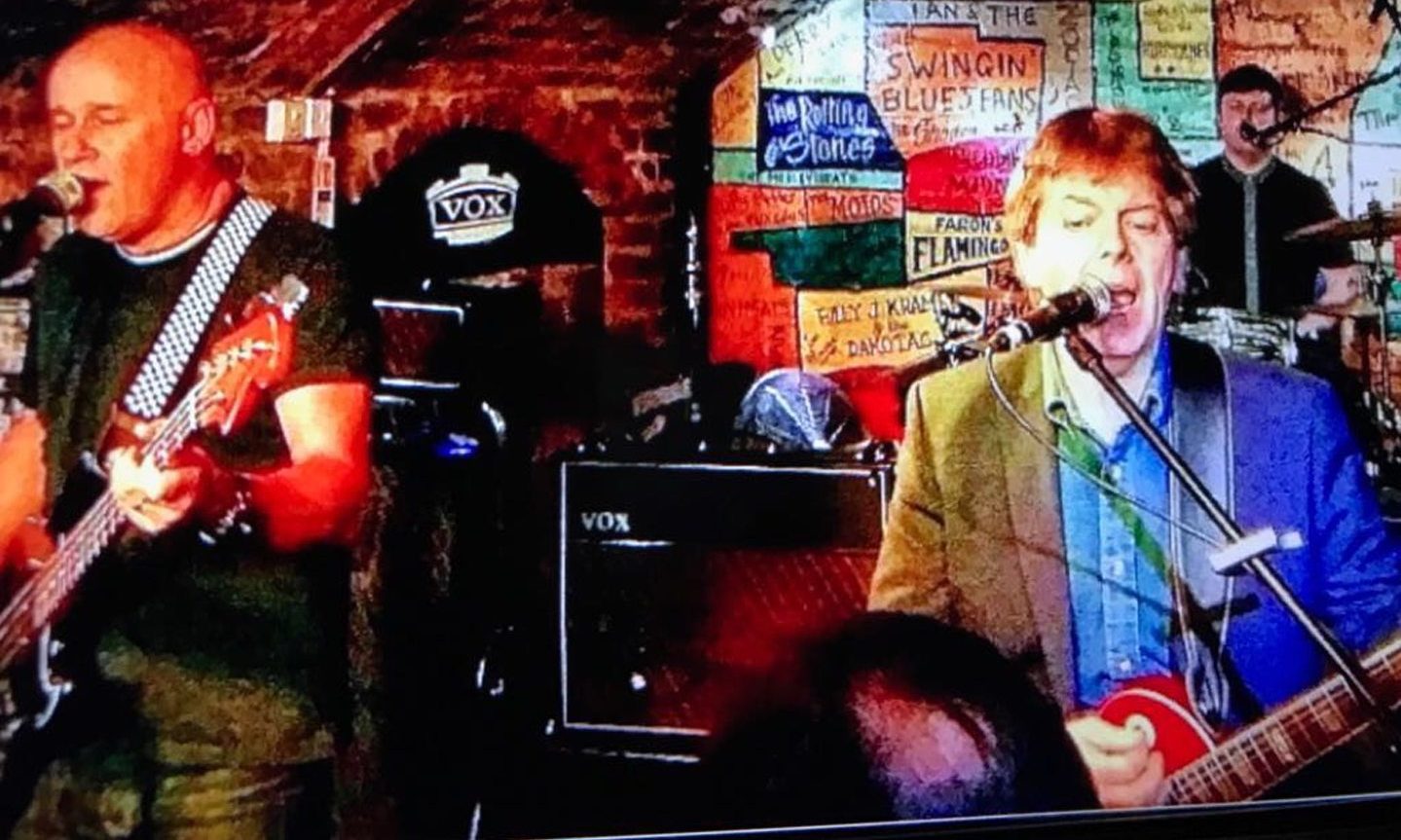
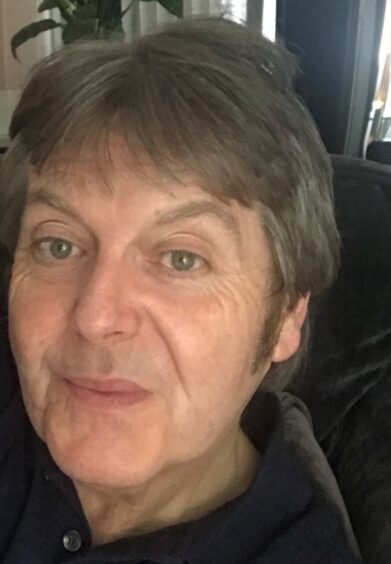
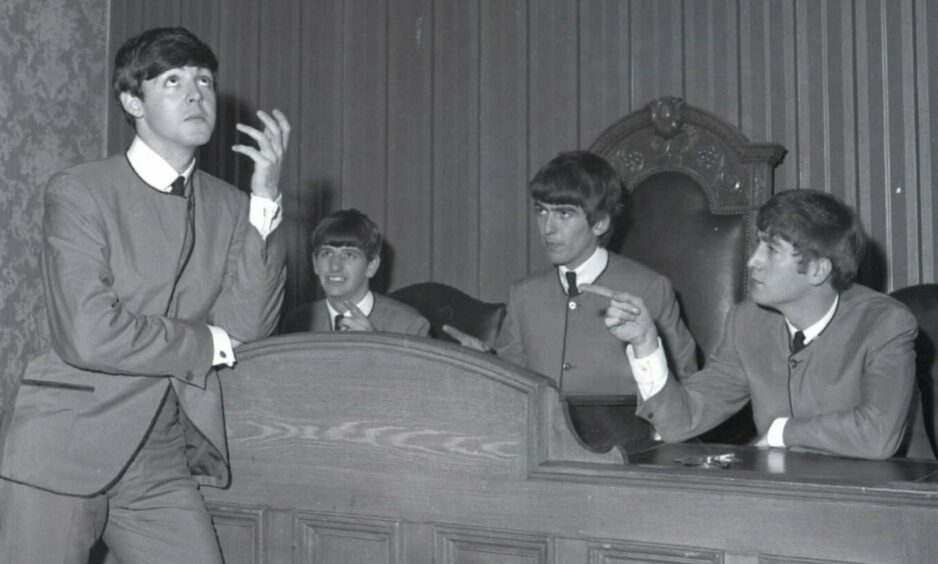



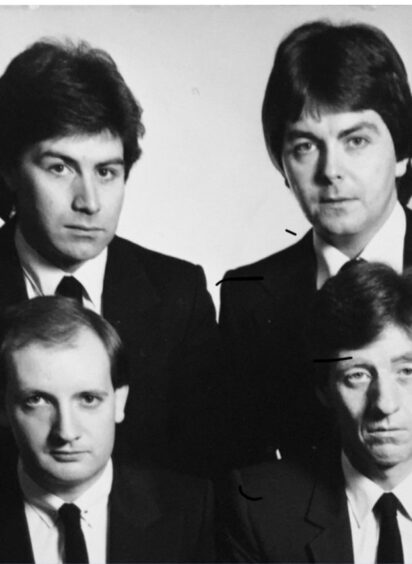
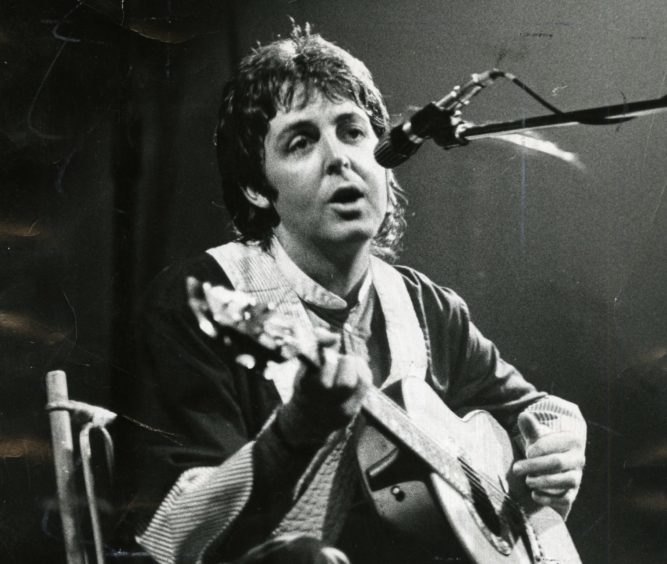
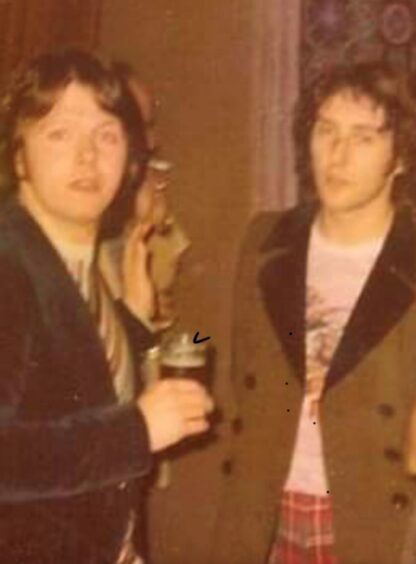
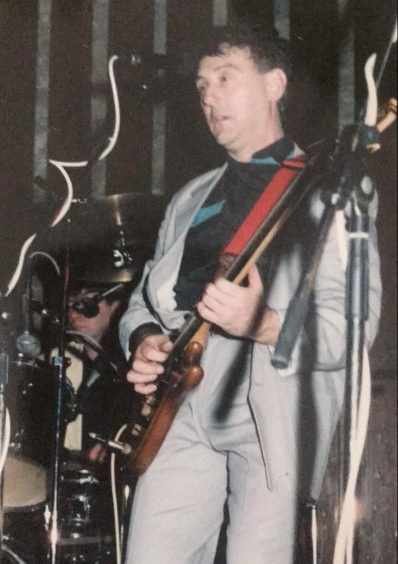
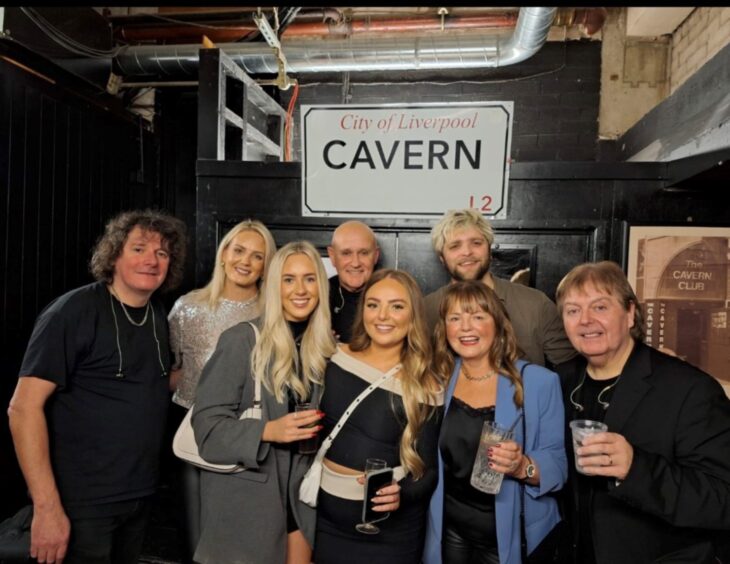

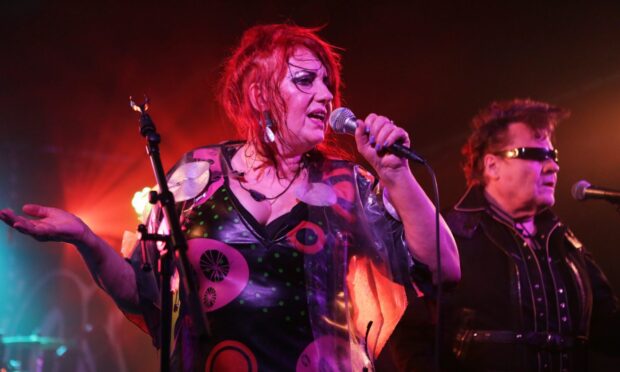
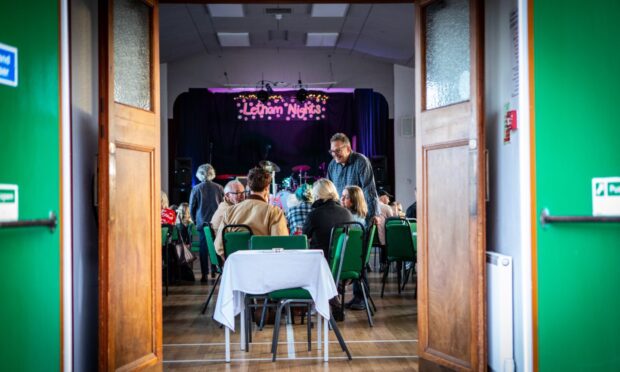

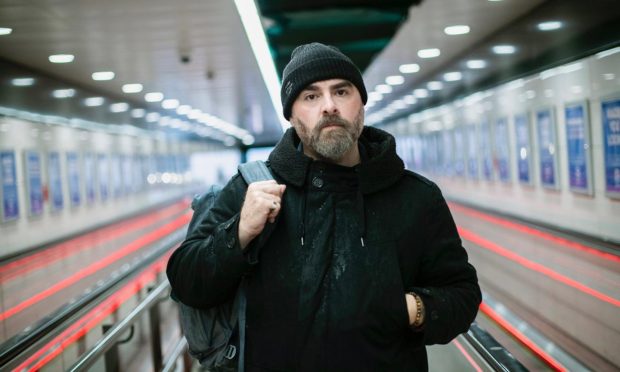
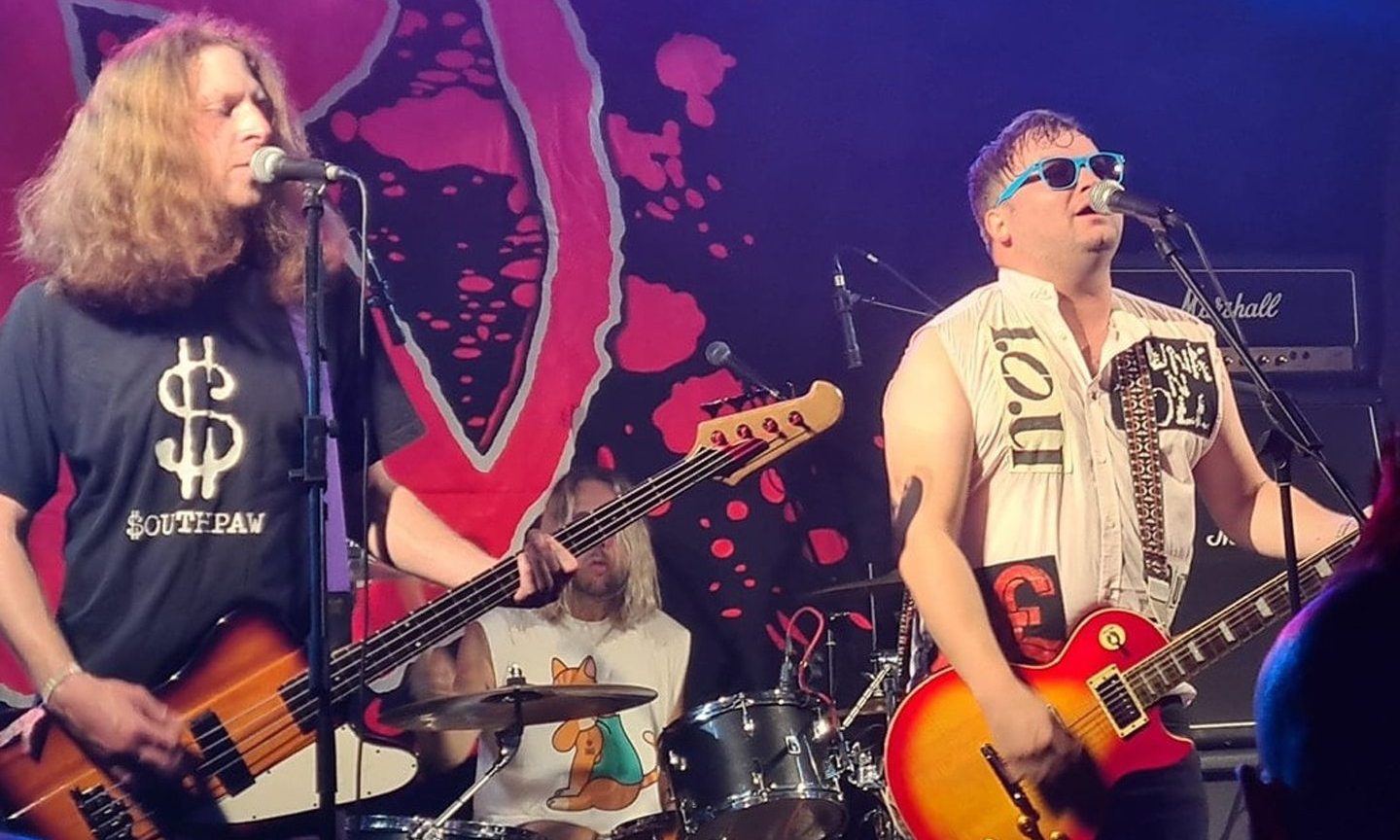
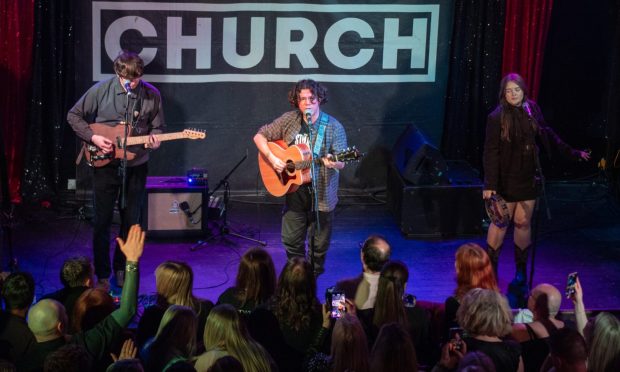

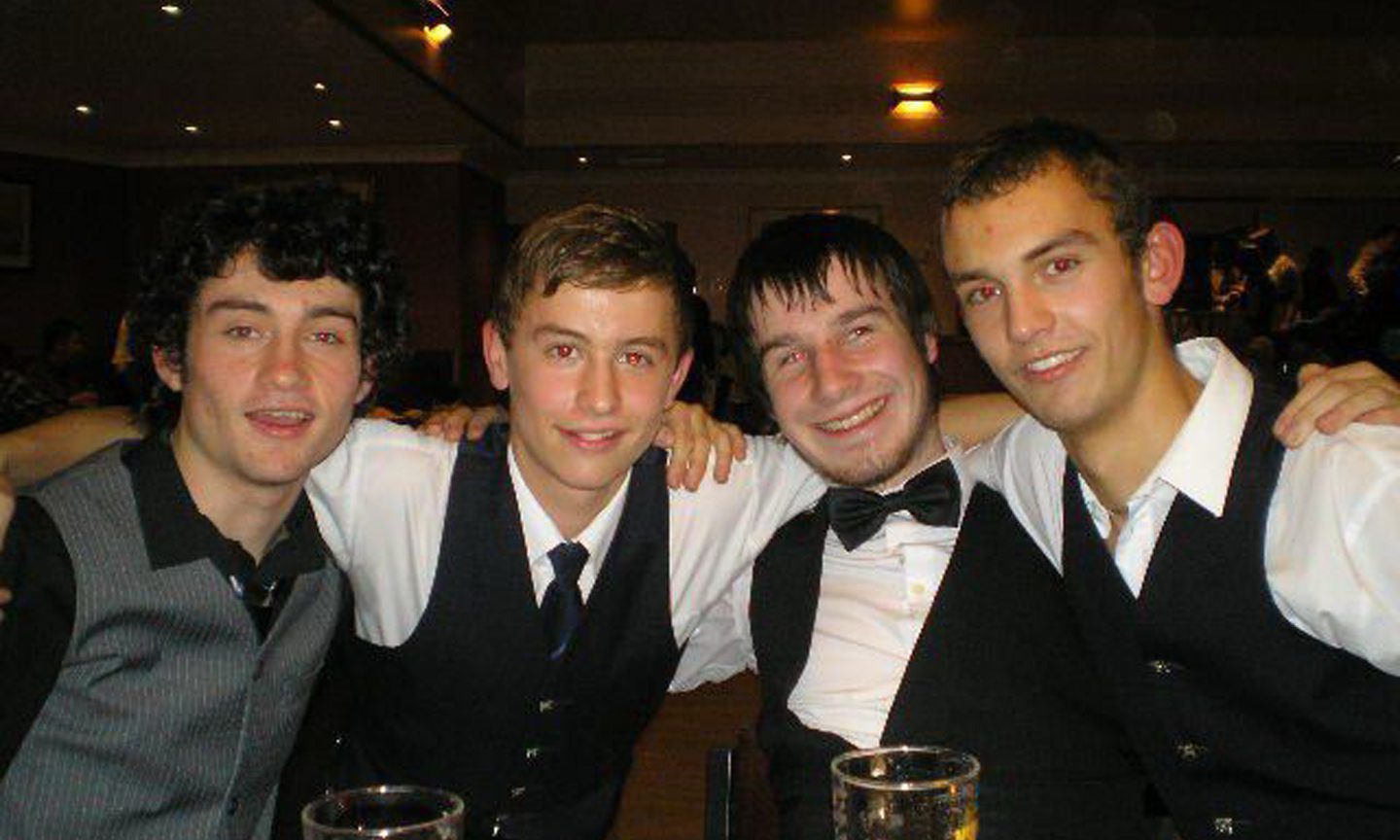
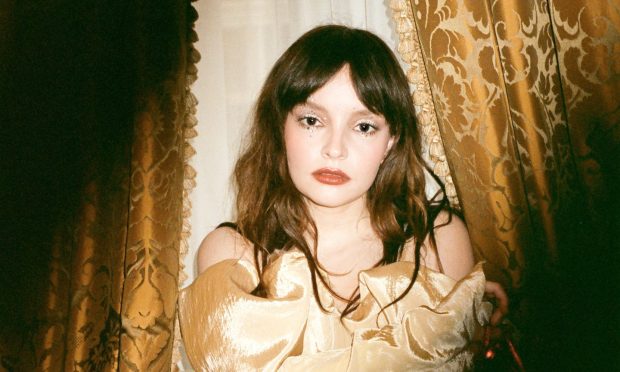
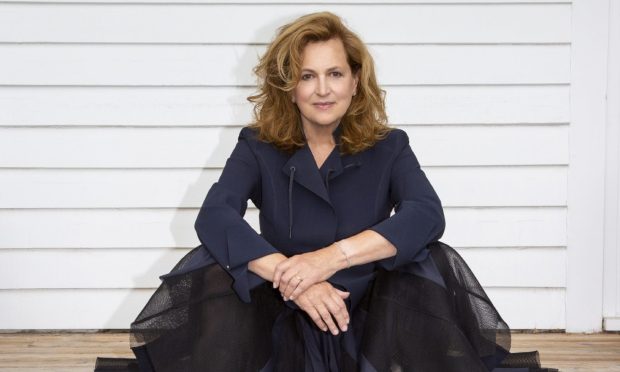
Conversation